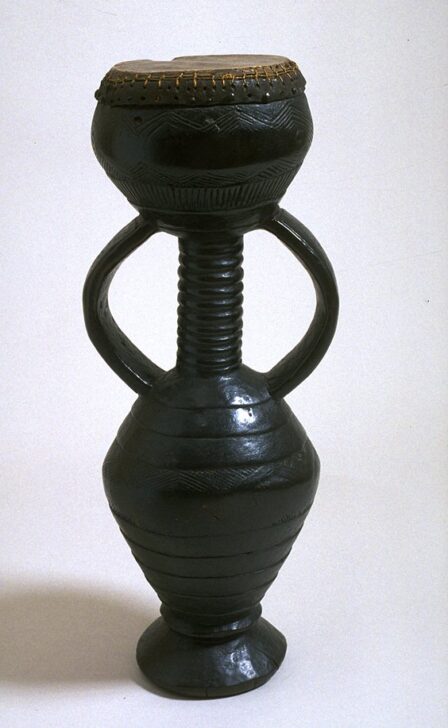Drum
Kuba

Description
Subject Matter:
Drums were said to be introduced by King Shyaam. They served as symbols of royalty and were used for dance during various ceremonies. Pel ambish is a drum of office commissioned by the king, containing a distinct geometric pattern of his choosing. After the king's death, the drum turned into a commemorative object to be removed and exhibited on important occasions. Additionally, the geometric patterns on this particular drum are similar to the patterns found on Kuba textiles and basketry. This drum is also covered in tukula powder, called tool or twool. Made from camwood, tukula was used abundantly on Kuba carvings. It was also smeared on clothing and used in times of mourning.
References:
David Binkley, Avatars of Power, 1987
Donna Coates Rogers, Royal Art of Kuba 1978
Daniel Biebuyck, The Arts of Zaire, 1985
Georges Meurant, African Textiles from the Kingdom of Kuba, 1986
Roy Sieber, African Textiles and Decorative Arts, 1972
Jan Vansina, The Children of Woot, 1978
Physical Description:
A vertically positioned drum with two handles. The stem between the handles resembles a coil or spiral shape consisting of layered rings. The bottom half of the drum, below the handles, consists of a linear design of concentric lines. The top portion of the drum, above the handles, consists of geometric patterns. Leather skin is stitched to the top of the drum.
Usage Rights:
If you are interested in using an image for a publication, please visit https://umma.umich.edu/request-image/ for more information and to fill out the online Image Rights and Reproductions Request Form.